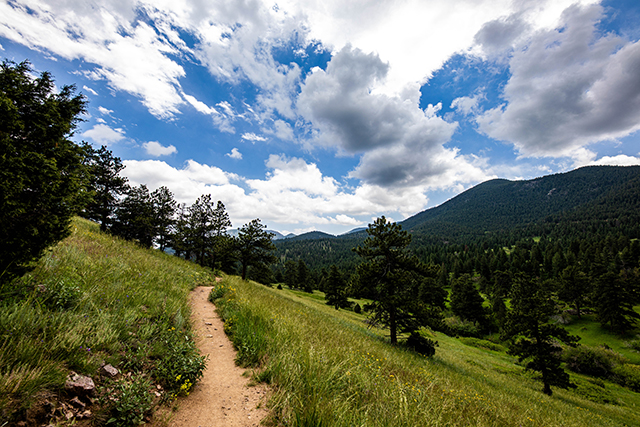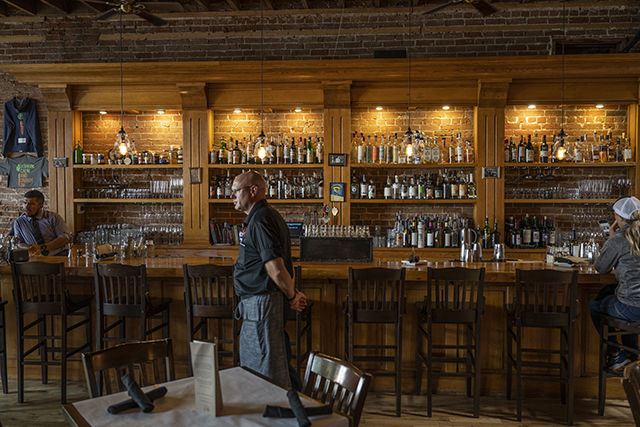How I Became a Bee-liever
04 Aug 2023
Inside the enchanting world of meditative bee huts
By Chloe-Anne Swink
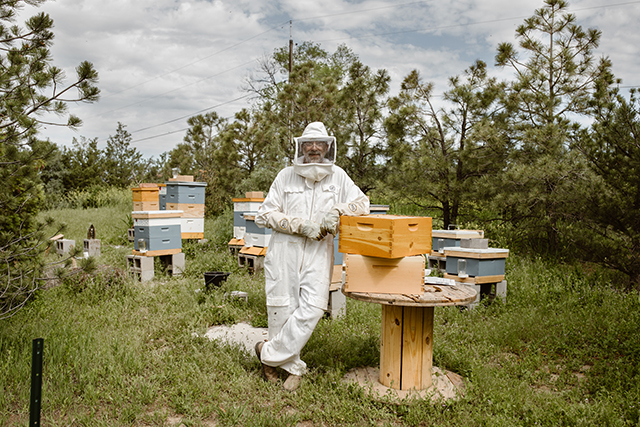
Lying down on a cedar bench in a hut that appears—to the unwitting eye—a lot like a dry sauna, I turn my head to the side, rest my ear against the cedar slats and close my eyes. A few minutes later, I’m transported to a riverside campsite in the mountains.
I can hear the sound of running water, entranced by the river that’s surely rushing beside me. I lay there for a few minutes more, consciously breathing in…and out…soaking in the tranquility of my environment.
Then—crackling. It’s the unmistakable pop of a campfire, sparking fluttering embers into the open air. The rush of the river continues. The snapping campfire amplifies. I breathe in…and out. And then I remember—I’m lying alone, in a small cedar hut.
To say I was alone, however, is not truly accurate. Below me swarmed a colony of over 200,000 honeybees, working diligently to tend to their queen and hive.
After just about 20 minutes, I walked out of that cedar bee hut absolutely buzzing.
This is the otherworldly experience awaiting all those who venture to the Capella Ranch bee huts.
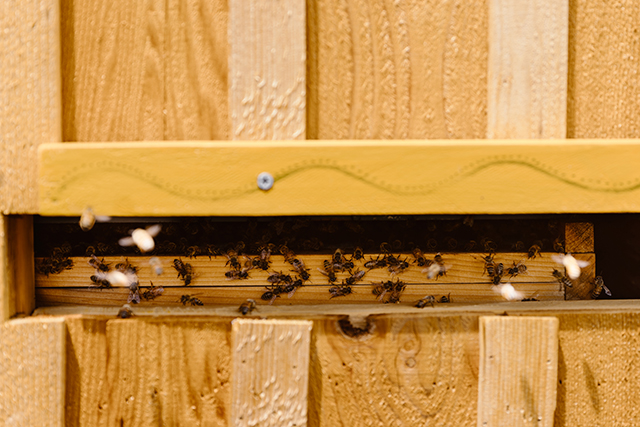
Carolyn Peterson, one of the owners of the family-run Capella Ranch, says everyone who walks into the bee huts seems to walk out with different, yet equally astounding (and perplexing) experiences. “A lot of people say they feel like they’re levitating above the wood,” she says.
In my case, I found myself lost in a meditative state, absorbed in a deep calm. At about 15 minutes into the experience, I felt a tingling warming feeling crawl from my spine, down my arms and into my fingertips. By the 20-minute mark, when Carolyn knocked on the door to the bee hut, I might as well have dozed off, woken up and taken a couple of shots of espresso.
I can only relate the feeling I encountered to that of a deep yoga nidra (or “deep rest”) practice, in which you’re rejuvenated without sleep and walk away from the practice feeling both ecstatic and deeply relaxed.
It’s a lot to take in, but there are decades of science and centuries of history behind apitherapy—the field of therapeutics that bee huts fall into.
Any practice that uses compounds produced by bees, such as honey, propolis, bee venom and royal jelly for the treatment and prevention of acute illness and disease is considered apitherapy. It’s used to treat everything from burns to multiple sclerosis symptoms.
What visitors to Capella Ranch experience inside the bee huts is a niche category of apitherapy called hive aerosol apitherapy. The way Charlie Peterson, Carolyn’s husband, beekeeper and co-owner of Capella Ranch, explains it, “Hive aerosol apitherapy is the inhalation of the aerosol that comes off the beehives.”
Hive aerosol apitherapy, in particular, has anecdotally helped calm anxiety, eliminate migraines, clear sinuses and allergy symptoms and improve symptoms of depression. While Charlie and Carolyn don’t claim or guarantee any medical benefits will result from time spent in their bee huts, from my own experience, I can certainly see how it could be possible.
The bee huts at Capella Ranch are one of only a few in the United States that are available to the public. However, the use of bee huts as a therapeutic wellness practice has been popular in Eastern Europe for many years. Charlie and Carolyn take inspiration from countries like Austria and Belgium that have long trusted in the healing properties of hive aerosol apitherapy.
When you arrive at Capella Ranch, you’re led to one of two cedar bee huts on the property. You’re greeted by the sound of roosters, goats, lambs and other farm animals that Carolyn cares for. The bee huts are roomy, yet cozy—thoughtfully decorated with pillows and bolsters of various shapes and sizes to ensure you can settle in however you’re most comfortable.
They’re equipped with windows and cameras, too (to page Charlie and Carolyn if you need anything during your sessions) and two-tiered cedar benches. The tallest of which holds the active beehive you commune with. Through quarter-inch gaps in the wood slats, you can see bees at work behind a metal grate and hear their buzzing activity uninterrupted. “There’s a cavity around where the beehives are. So even though they’re fully screened off from where you’re sitting, they can still fly around,” says Charlie.
And the experience strays from typical beekeeping practices. Traditional beekeeping requires beekeepers to interrupt the insects to get an up-close interaction with them. Opening hives causes bees to fly up and buzz around the beekeeper’s head, interfering with their daily work. Sitting in a bee hut, on the other hand, allows you to get up close and personal with the bees in the most unintrusive way possible. The bees continue business as usual, and the humans can find a meditative experience in their droning hums.
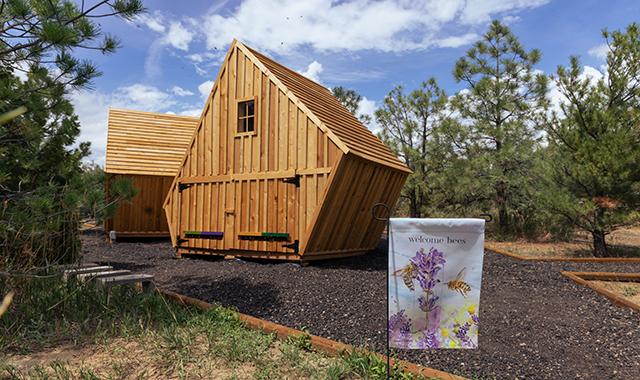
“I’ve heard things that I would never have even known they did,” says Charlie of the “crackling” campfire sound that I heard the bees making during my time in the bee hut, “As a beekeeper, I had never even heard that noise. I’ve asked every beekeeper who comes by, and nobody has ever heard it.”
While it isn’t certain what the bees are doing to cause the strange crackling phenomenon, what is certain is that we have a lot to learn from spending time with the bees.
In particular, Carolyn cites three major factors that patrons of the bee huts come to experience: A serene white noise, the effects of an electromagnetic field that the bees generate around the hive and highly ionic air that’s created inside the hut as a result.
“People who do Reiki and who are very in tune with energy healing can feel their electromagnetic field,” says Carolyn. “They say it’s very psychedelic. It’s like a guided meditation.”
While the Petersons can’t make promises about what any individual will gain inside the bee huts, every one of their 300-plus patrons seem to have walked away from their time at Capella Ranch as bee-lievers. “If nothing else, it’s a great opportunity to relax and tune yourself into nature. We really encourage people to turn off technology and just be one with the bees,” says Charlie.
The bee huts at Capella Ranch are just one of those things that you must experience yourself—and anyone can reserve a 30-minute or one-hour time slot to harmonize with the bees. The bee huts have been open to the public since August 2022, and they continue to welcome visitors from springtime to early fall—just as long as the outside temperatures are warm enough to keep the bees happy and active.
“First and foremost, we protect the bees,” says Carolyn.
To reserve a hut, please visit capellaranch.com.

